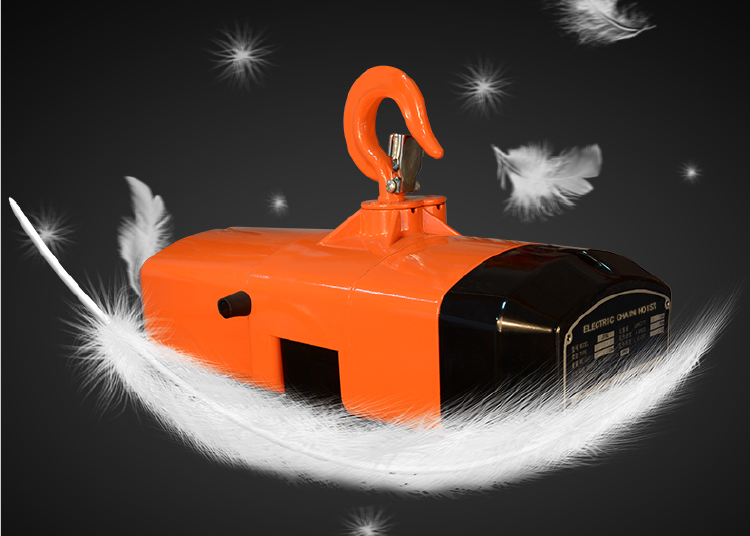How to Choose the Right Electric Hoist for Your Lifting Needs
2025-07-01 200 FOLLOW Jentan Machinery | www.jentanhoist.com
How to Choose the Right Electric Hoist: A Comprehensive Guide
Choosing the right electric hoist for your lifting needs can seem like a daunting task. With so many options available in the market, it is essential to understand the key features and specifications that can make a difference in performance, safety, and efficiency. Whether you are working in construction, manufacturing, or warehouse operations, selecting the correct hoist is crucial for smooth operations.
Here’s a step-by-step guide on how to choose the right electric hoist for your needs.
1. Understand Your Lifting Capacity Needs
The first step in choosing an electric hoist is to determine the lifting capacity. This refers to the maximum weight the hoist can lift safely. Hoists are available in various capacities ranging from small 125kg models to heavy-duty hoists capable of lifting up to several tons.
Factors to consider:
-
Load Weight: Choose a hoist with a capacity that exceeds the heaviest load you will be lifting to ensure safety and avoid overloading.
-
Safety Factor: Most hoists are designed with a safety factor (e.g., 1.5x to 2x), meaning the hoist can safely handle more weight than the rated capacity.
2. Choose the Right Power Source
Electric hoists come in different power configurations. Choosing the right one depends on your work environment and available power supply. The two most common power types are:
-
Single Phase: Ideal for smaller or residential applications where only a standard power supply (220V) is available.
-
Three Phase: Suitable for larger industrial applications that require heavy-duty lifting and have access to three-phase power (380V).
Considerations:
-
Location: If you're working in a location where three-phase power is not available, a single-phase electric hoist would be the best option.
-
Lifting Frequency: For high-frequency lifting in industrial settings, a three-phase hoist is preferred for its durability and power.
For more information, please click A Guide to Voltage, Power Supply & More
3. Decide on the Type of Hoist (Wire Rope vs. Chain)
There are two primary types of electric hoists: wire rope hoists and chain hoists. Each type is suitable for different lifting needs.
-
Wire Rope Hoist: Best for high-lifting heights and applications that require lifting heavy loads over long distances. They are commonly used in construction sites, warehouses, and mining operations.
-
Chain Hoist: Ideal for compact spaces and low-headroom applications. Chain hoists are typically used in manufacturing facilities, auto shops, and theater productions.
Key Differences:
-
Lifting Speed: Wire rope hoists typically offer higher lifting speeds and are suited for taller buildings.
-
Space Requirements: Chain hoists are more compact and suited for tight spaces.
4. Consider the Lifting Speed
Lifting speed is another important factor to consider. Hoists come with single-speed, dual-speed, and variable-speed options.
-
Single Speed: Offers a fixed lifting speed. It’s suitable for applications where the speed isn’t critical.
-
Dual Speed: Provides two speeds (slow for precise positioning, fast for general lifting). Ideal for environments where speed control is important.
-
Variable Speed: Allows for smooth, adjustable speed control. This is best for tasks requiring precise control and delicate lifting.
5. Choose the Right Hoist Features
Different hoists come with various features designed to enhance performance and safety. Some of the most important features include:
-
Limit Switches: These prevent the hoist from over-traveling, protecting both the hoist and the load.
-
Overload Protection: Ensures that the hoist cannot be overloaded beyond its rated capacity.
-
Emergency Stop Button: This allows quick deactivation in case of emergency.
-
Safety Brakes: Essential for preventing uncontrolled load lowering in case of power failure.
-
IP Rating: Check the Ingress Protection (IP) rating to ensure the hoist can withstand the environment. An IP55 rating, for instance, means the hoist is dust-tight and water-resistant.
6. Check for Durability and Maintenance Requirements
The durability of an electric hoist depends on its build quality, material, and how well it is maintained. Look for hoists made of high-quality materials such as alloy steel, aluminum, and corrosion-resistant components. Also, consider hoists with easy-to-maintain designs and readily available spare parts.
-
Air-cooled motors: Can adapt to harsh operating environments, ensuring the motor stays cool during heavy use.
-
External shaft connecting body: Ensures long-term stability and durability for extended periods of use.
7. Understand the Operating Environment
The environment in which the hoist will be used plays a crucial role in selecting the right hoist. Consider the following factors:
-
Indoor or Outdoor Use: For outdoor use, choose hoists with a higher IP rating (such as IP55) for protection against dust and water.
-
Temperature and Humidity: Some hoists are designed for use in extreme temperatures or humid environments. Look for models with air-cooled motors if you’re working in hot or humid conditions.
-
Explosion-Proof Environments: For hazardous or explosive environments, ensure the hoist is certified for use in such areas (e.g., ATEX certification).
8. Conclusion
Choosing the right electric hoist involves understanding your lifting requirements, the type of work environment, and the specific features that will ensure optimal performance and safety. Consider the lifting capacity, power source, hoist type, speed requirements, and durability features before making your choice.
At Jentan Machinery, we offer a wide range of high-quality electric chain hoists designed for various industrial applications. Our products combine reliability, safety, and high performance to help you get the job done efficiently.
Want to know more or request a quote?
Visit our JTHH Electric Chain Hoist for detailed specs.
